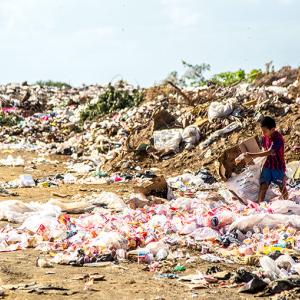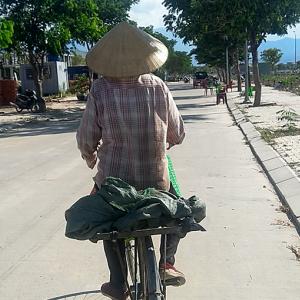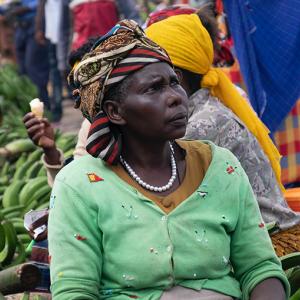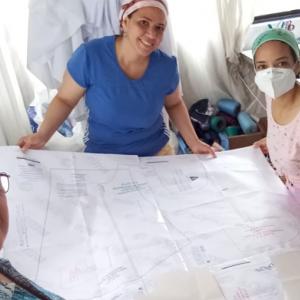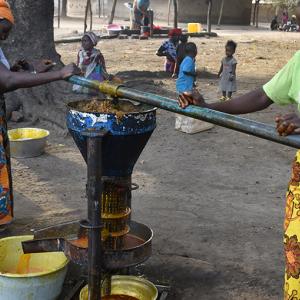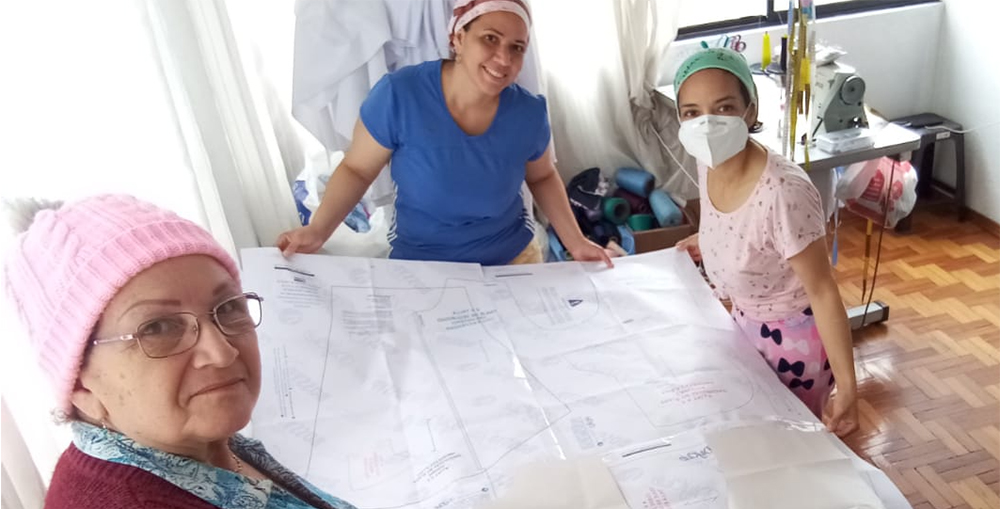Use case 6 Distributed problem solving
The sixth use case is distributed problem solving, which overlaps in many ways with the five other use-cases. These collective intelligence methods have broad application across the majority of the SDGs, but become especially relevant for targets where there might be a lack of access to established solutions and practices, or when new or locally-appropriate solutions are needed.
This is often the case where the issue or environment is new or evolving, or where there have not been strong enough incentives for others to find solutions. It’s perhaps not surprising then, that our analysis found examples of collective intelligence being frequently applied to help improve climate adaptation and food security (targets 2.3 and 13.1), as well as tackle infectious and neglected or rare diseases (targets 3.3 and 3.4).
- Crowdsourcing solutions/open innovation
- Peer-to-peer crowdsourcing of knowledge or ideas
- Open source repositories/project wikis to share solutions
- Crowd labeling of data to train ‘AI for good’ models
- By 2030, double the agricultural productivity and incomes of small-scale food producers, in particular women, indigenous peoples, family farmers, pastoralists and fishers, including through secure and equal access to land, other productive resources and inputs, knowledge, financial services, markets and opportunities for value addition and non-farm employment (2.3)
- By 2030, end the epidemics of AIDS, tuberculosis, malaria and neglected tropical diseases and combat hepatitis, water-borne diseases and other communicable diseases (3.3)
- By 2030, reduce by one third premature mortality from non-communicable diseases through prevention and treatment and promote mental health and well-being (3.4)
- Strengthen resilience and adaptive capacity to climate-related hazards and natural disasters in all countries (13.1)

Crowdsourcing solutions/open innovation
The use of open innovation methods such as challenge prizes, like XPRIZE or The Grand Challenges, are now well-established in the panoply of collective intelligence approaches. Usually run by an institution, they work by specifying problems to be solved and then encouraging, incentivizing and supporting a much broader range of innovators to help solve them. They have been used for a wide range of issues, from tackling antibiotic resistance to climate change – and work best with careful orchestration and problem solvers who understand the realities on the ground.
Nesta Challenges’ Data Driven Farming Prize, sponsored by USAID and Feed the Future, challenged innovators to use technology to improve agricultural productivity and the livelihoods of smallholders in Nepal. Thirteen finalists, including six from Nepal, were selected from 143 entries from 27 countries. Winning entries included Nepal’s Db2Map for their GeoKrishi program which integrated satellite, government and crowdsourced data into actionable advice for farmers and agricultural entrepreneurs. Another winner was Spero Analytics from Canada, for their wireless solar mesh network to communicate soil moisture data to agricultural extension services. Six months after the prize ended, finalists had formed at least 22 new partnerships, including links with government ministries, and eight new technology products had entered the market.
In Colombia, the UNDP’s Accelerator Lab also turned to crowdsourcing solutions when the COVID-19 pandemic exposed the country’s shortage of face masks and other forms of personal protective equipment (PPE). The Life Helmets challenge called for designs for closed full-face shields to allow citizens to safely return to work while avoiding infection. The five winning designs were submitted by a doctor, a student, a DIY maker and a taxi driver – demonstrating how collective intelligence approaches can bring in a diverse and sometimes unusual range of problem solvers. Following the completion of the challenge, the Life Helmets platform was turned into a marketplace for the winning designs, where members of the public and companies can buy face shields for personal use. UNDP Colombia has since purchased and distributed more than 27,000 of these winning Life Helmets across the country, including in remote locations where communities have struggled to access PPE.
Peer-to-peer crowdsourcing of knowledge or solutions
‘Lead-user innovation’ is a term coined by MIT’s Eric von Hippel in the eighties. It refers to people who are the creators of novel solutions to particular problems or challenges they face. The advance of the internet has led to more and more collaborations of lead users –
who can now find each other and work together even though they may be separated geographically.
Wefarm is a free peer-to-peer service for small scale farmers in East Africa. It enables them to ask each other questions on anything related to agriculture via SMS and then receive crowdsourced bespoke content and ideas from other farmers within minutes. Wefarm’s machine learning algorithms match each question to the best suited responders in the community. Its NLP models can identify three regional African languages – Kiswahili, Luganda and Runyankore – in addition to English. More than one million farmers are currently using it, sharing more than 40,000 questions and answers daily.
In Ethiopia and Nigeria, researchers from Bioversity International have been working with subsistence farmers who test different varieties of seeds for climate resilience and pool their knowledge about which varieties fare best. This peer-to-peer crowdsourcing approach has been proven to find seeds that are much better at surviving extreme weather conditions than those recommended on official lists, a critical part of mitigating the impact of climate change on food systems.
PatientsLikeMe is a patient network and real-time research platform with over 600,000 members. Patients connect with others who have the same disease or condition. Together they monitor their conditions, and share data on their diseases and treatment strategies. Data from the platform also forms the basis of more than 100 publicly accessible peer-reviewed scientific studies.
Open source repositories/project wikis to share solutions
Many networks are facilitating distributed problem solving by using open source repositories or project wikis – which enable anybody to use, study, modify or distribute an existing project or solution for free.
Public Lab is a non-profit organization that facilitates collaborative, open source environmental research. Its volunteer community develops open source hardware, software, and other open methodologies to democratize environmental monitoring. The community publishes plans and guides for ‘Do It Yourself’ monitoring tools that can be made at home, making it easier for others to apply or adapt the methods to their own situation. Field Ready’s designs for 3D-printed humanitarian supplies, or Just One Giant Lab’s low-cost and open source COVID-19 test kit are other examples where resources are continuously iterated by a global community.
Crowd labeling of data to train ‘AI for good’ models
Collective intelligence is often fundamental to the latest advances in AI, especially machine learning approaches that rely on humans to label the large datasets they use as their training material.
An example of this is the organization SpotLab. Their online games include images of different parasites in digitized blood samples. By identifying different parasites in the blood samples, crowds are contributing to a dataset of labeled images that will train accurate AI models for the diagnosis of tropical diseases such as malaria and leishmania.
Many of the larger citizen science platforms have started to engage volunteers in labeling data to help train AI models for a variety of tasks. These range from labeling pictures of placenta samples to help scientists understand why some placentas fail during pregnancy complications, to labeling plant and animal species from the data collected by iNaturalist’s citizen science community.
Cochrane Crowd is another long-running platform that relies on a network of 37,000 volunteers to help classify and label medical research on a wide range of issues. At a time when research output is expanding exponentially, citizen science can help to manage the information overload. Contributors complete a range of microtasks, for example noting whether the research is from a randomized trial, or classifying an article abstract. This enables the identification and description of health research as it’s published or produced. It makes the production of expert synthesis and systematic review much quicker, turning information from multiple studies into knowledge about treatment effects. In one study, the crowd was found to have an accuracy of 99 per cent on the tasks it performed.


